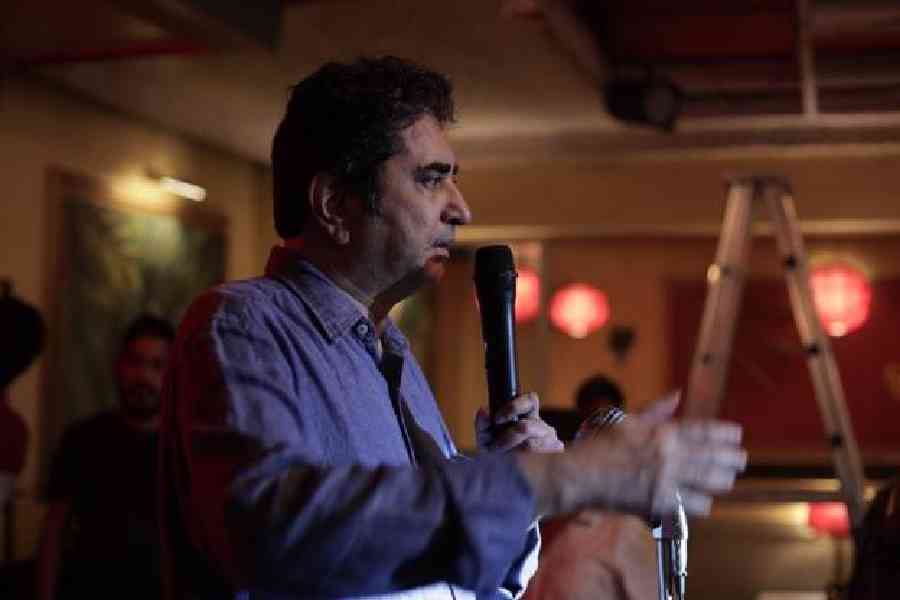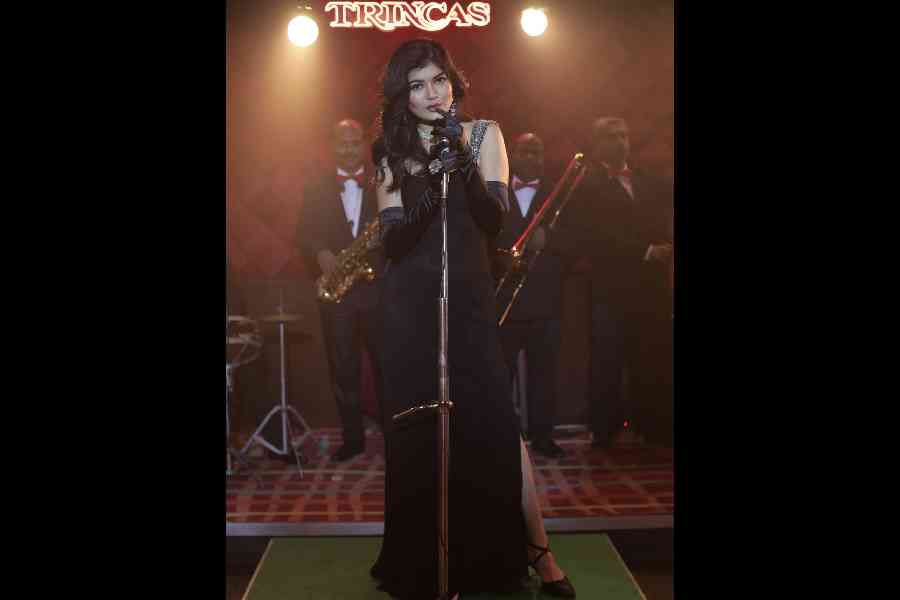After the success of his last film Aparajito, a tribute to Satyajit Ray, Anik Datta is back on the shooting floor with a new venture. With an original story written by him and co-scripted by him and Utsav Mukherjee, this time Datta pays “homage to Pradosh C. Mitter”, aka Feluda, Bengal’s favourite fictional detective, made famous by Ray in his Feluda novels and films. Besides its title Joto Kando Kolkatatei which has obvious reference to Ray’s Joto Kando Kathmandute, the film also promises to be sprinkled with many more allusions, trivia and Easter eggs related Ray’s immensely popular detective works of fiction.
Its action based mostly in Calcutta, the film deals with the unravelling of a mystery that has its clues hidden in the Calcutta of the ’60s. In the only sequence of the film to have been shot so far, director Anik Datta has tried to recreate the flavour of Park Street during that era. The music and dance sequence, shot in Trincas, one of the oldest restaurants on Park Street and one with a rich history and legacy, has attempted to bring to life the thriving nightclub culture of the city and the lifestyle of its rich and elite.
With little first-hand information on the period available at present, Datta and his team have relied mostly on old photographs shared by Trincas owner Anand Puri and anecdotes from the descendants of those who had experienced the heady days of Calcutta’s past, as research material. He was assisted by his Aparajito team members Suchismita Dasgupta (costume design) and Ananda Adya (art direction), to reconstruct an authentic look and feel for the sequence. Hence, men are clad in three-piece suits with bow ties while women are fashionably decked out in their finest georgettes and chiffons, pearls and diamonds. Crooners sing along to a tune played by an orchestra or a jazz band, while liveried servers attend to guests. As Datta clarified: “Apart from costumes, furniture and other light and décor pieces, appropriate crockery, cutlery, musical instruments, and many more accessories had to be procured to generate the correct ambience.”
Datta says that while recreating the era, his task, though far from easy, was made somewhat simpler by Trincas, which has tried to retain its old-world charm and aura even to this day. “However, as it is a busy restaurant and we could not shoot during lunch, dinner or breakfast hours, we had to shoot through the night and got a limited amount of time to finish our job as we couldn’t let the sunlight come in,” he said. Another challenge was having to keep an eye on the budget. Datta declared that he had to “constantly balance the expenses with the required effect so that it didn’t turn out looking tacky or fake”.
Besides the bustling nightlife of Calcutta in the ‘60s, which is revived in the film while revealing the back story of a character, some of the city’s nearly-forgotten heritage is also explored in Joto Kando Kolkatatei, including Bourne and Shepherd, one of the oldest running photographic studios of the world, some old churches and an old-fashioned north-Calcutta residence.
A light, entertaining film by the director’s own admission, it features Abir Chatterjee, Roja Paromita Dey, Rik Chatterjee and Bangladeshi actress Quazi Nawshaba Ahmed in key roles in the two parallel stories that run through it.

Anik
“We have tried to follow the fashion trend from that time. We have taken references of Bengali and English movies from that time. Roja’s dress and gloves were bought at a vintage store in Oxford. We used silk saris and long and midi dresses for the female crowd, while the men wore suits or trousers and dinner jackets. Paroma Banerjee was kind enough to lend us saris from her brand Kalakriti, as her signature print saris are very retro in nature, and went perfectly with the scene,” said Suchismita Dasgupta, stylist and costume designer.
With the shooting (which will partly take place in Darjeeling) expected to be over by the end of the year, viewers can start looking forward to Anik Datta’s latest offering to hit theatres sometime in the middle of 2024. For Feluda and Anik Datta fans, till then, it’s going to be a wait for yesterday once more.










